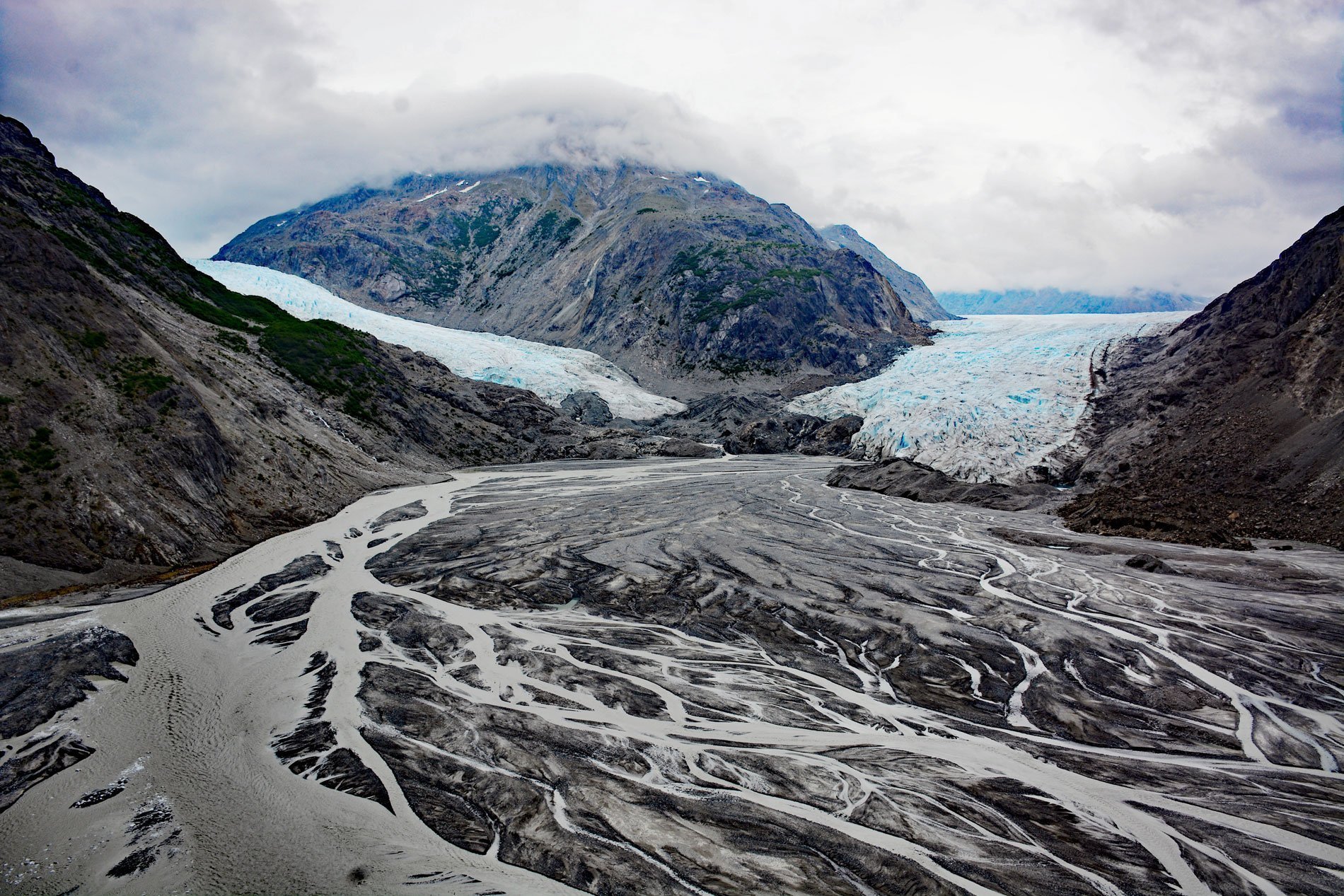Morse Glacier is in Glacier Bay National Park and Preserve, and starts in the Alsek Range of the Saint Elias Mountains, and flows south-southeast for 9 miles (14.5 km) to an exposed outwash plain near the terminus of the Muir Glacier at the head of Muir Inlet, about 53 miles (85 km) north of Gustavus, Alaska. The glacier was named in 1892 by Harry Fielding Reid for J.F. Morse, one of his companions on his trip to this area in 1890. Reid originally called it “West Tributary” of the Muir Glacier. Muir Glacier starts about 9 miles (14.5 km) south of Mount Harris and flows south for 13 miles (20 km) to Muir Inlet, about 7 miles (11 km) northwest of White Thunder Ridge. The glacier was named in about 1880 for John Muir, an American naturalist who discovered this glacier on his 1879 trip to Alaska.
Muir Glacier is now about 0.4 miles (0.5 km) wide and about 13 miles (21 km) long. The glacier has been the main attraction for visitors until the mid-1980s when the glacier terminus was at tidewater and calved icebergs into Muir Inlet from a wall of ice 200 feet (90 m) high. Muir Glacier has undergone a very rapid and well-documented retreat since the Little Ice Age maximum position at the mouth of Glacier Bay around 1780. In 1794, the explorer Captain George Vancouver found that most of Glacier Bay were covered by an enormous ice sheet estimated at 3,900 feet (1,200 m) thick in places. In 1904 the glacier reportedly “broke through the mountains” between Pyramid Peak to the west and Mount Wright and Mount Case to the east and was at the entrance to Muir Inlet. The glacier has since retreated over 24 miles (38 km) from its 1904 position.
A dramatically rapid retreat began in 1899 when ice flow and calving rates were very high. Muir Glacier flowed at about 6,000 feet (1,839 m) per year, or about 16 feet (5 m) per day as late as 1979. The glacier emerged from tidewater in 1993. Today, the rate of ice flow near the terminus is about 150 feet (46 m) per year or 0.5 feet (0.15 m) per day. The terminus position is relatively stable; however, the ice is progressively thinning and surface crevasses are generally no longer present in the terminus region. The ice advances and retreats seasonally depositing large mounds of sediment at the terminus. Read more here and here. Explore more of Morse and Muir Glaciers here:

